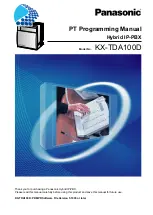
Communications configuring
3-158
System- and communication configuring D7-SYS - SIMADYN D
Edition 12.2003
−
CRR / CRT = ‘Text’
Enter the name for the virtual connections are which are combined
to form a data set (telegram).
CFC entry:
Mark the connection / righthand mouse key / connection to
operand
“!”
and comprises max. 6 characters.
−
MOD = R
P-bus communications always operates in the refresh mode.
3. Assigning process quantities to the data set:
Marked block outputs are sent and the inputs are supplied from a
receive data set if they are connected to the data set/telegram via the
dialog box “Insert Connection to Address”. All virtual connections with
this name are combined to form a data set.
A
sequence number
still has to be specified for each value (connection).
This only specifies the sequence of the associated value in the data
set, but not the absolute position!
For the CFC code compilation, the data, associated with a data set,
are arranged in the memory in an increasing sequence. The sequence
numbers can be assigned with gaps, e.g. so that data can be easily
and subsequently inserted..
Contrary to "data transfer with peripheral accesses", for virtual
communications, data is always packed consecutively
without any
gaps
. The configuring engineer must ensure, by sensibly assigning
the sequence number, that the data are saved to word or double word
limits in order to achieve a high processing speed.
The sequence number does not provide information on the address
and does not specify the offset!
If an
offset of a value
in the data set (e.g. in bytes) is required for S7
program, it can be calculated from the sum of all of the previously
located values, taking into account their data type (length=2 for INT,
length=4 for REAL/DINT).
SIMATIC S7
data type
FM 458 (CFC)
data type
Comments
BYTE BOOL
The MSB in the byte to be sent is decisive
MSB = 1, BOOL is TRUE
MSB = 0, BOOL is FALSE
REAL SDTIME
Table 3-61
Assignment of SIMATIC S7 and SIMADYN D data types
Different data types
















































